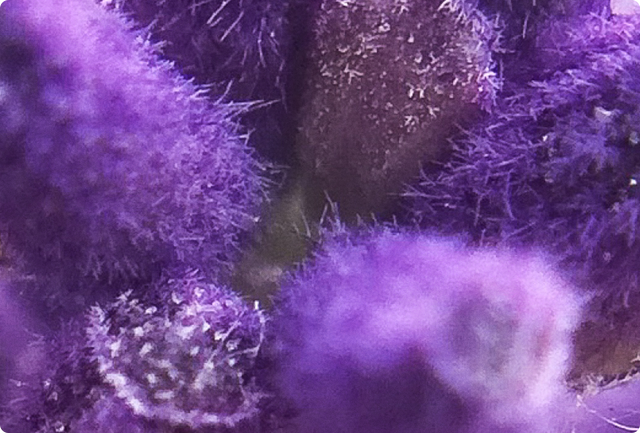About The Oil
Cold-pressed from the peel of Citrus paradisi, grapefruit essential oil offers a bright, citrusy aroma that’s as uplifting as it is clarifying. Known for its fresh, bittersweet scent, this oil is a favourite in aromatherapy blends designed to energize the body, support the metabolism, and brighten the mood. Rich in the monoterpene limonene, grapefruit oil is prized for its cleansing, antimicrobial, and antioxidant effects, making it both a therapeutic tool and a sensory delight.
Why You Would Use Grapefruit Essential Oil
-
To uplift the mood and reduce feelings of tension or mental fatigue
-
As a natural cleanser with antimicrobial and purifying properties
-
To help support healthy digestion and metabolism
-
For its stimulating scent that promotes focus and alertness
-
As an antioxidant-rich botanical that defends against environmental stressors
Clinical Findings
| Study | Participants & Duration | Key Results | Reference |
|
Antifungal Activity |
In vitro |
Inhibited growth of Candida albicans and clinical isolates of oral candidiasis in vitro. |
Delgado et al., 2020 |
|
Stress Reduction |
In vivo |
Reduced stress levels in healthy adult participants. |
Takagi et al., 2019 |
| Immune Response |
In vivo |
Increased salivary s-IgA levels, which suggests better local (topical) immunity. |
Takagi et al., 2019 |
| Circulatory & metabolic support |
Review of EO effects on metabolism and lipolysis |
Suggested lipolytic and circulatory-stimulating effects |
Dossier –Citrus paradisi |
Behind The Science
Grapefruit essential oil is composed predominantly of limonene, a compound widely studied for its antioxidant, antibacterial, and energizing properties. Limonene interacts with the body’s limbic system—particularly the amygdala and hippocampus—helping to influence mood and promote emotional clarity.
When inhaled, grapefruit EO increase the alertness and focus. On the skin and in topical applications, it demonstrates antimicrobial effects, disrupting bacterial cell membranes and neutralizing oxidative stress. Its ability to stimulate circulation may also contribute to its reputation as a “detoxifying” oil.
How and Where It Grows
Grapefruit trees are cultivated in subtropical and tropical regions across the globe, including the United States, South Africa, and the Mediterranean. The essential oil is obtained through cold pressing of the fruit’s rind, preserving the volatile aromatic compounds in their most vibrant form.
Use In Ancient Medicine
Though grapefruit is a relatively modern hybrid (developed in the 18th century), it quickly found its place in natural medicine. Traditional uses include support for digestion, purification rituals, and applications to boost vitality and ease tension. Its crisp scent was long appreciated in perfumery and energetic cleansing.
Symbolism
Grapefruit symbolizes joy, rejuvenation, and clarity. Its effervescent aroma is associated with shedding stagnancy, lifting one’s spirit, and instilling confidence. As a botanical ally, it invites lightness, optimism, and the courage to begin anew.
INFORMATION provided is intended for informational purposes only and is not meant to diagnose, treat, cure, or prevent any disease. Statements have not been evaluated by Health Canada or the FDA. Please consult a qualified healthcare provider before using essential oils for therapeutic purposes.
References
- Grapefruit Essential Oil (Citrus paradisi): A Comprehensive Dossier. Internal monograph.
- Delgado, A. , Velázquez, U. , González, J. , Montes, A. , Villarreal, S. , García, L. , Casas, R. and Luis, O. (2020) Evaluation of the Essential Oil of Citrus paradisi as an Alternative Treatment against Candida albicans. Open Journal of Stomatology, 10, 258-270. doi: 10.4236/ojst.2020.109025.
- Li, Y.; Li, W.; Ye, Z.; Ji, C.; Zhou, Z. Antioxidant, Anti-Inflammatory, and Anticancer Activities of Five Citrus Peel Essential Oils. Antioxidants 2024, 13, 1562. https://doi.org/10.3390/antiox13121562
- Deng, W.; Liu, K.; Cao, S.; Sun, J.; Zhong, B.; Chun, J. Chemical Composition, Antimicrobial, Antioxidant, and Antiproliferative Properties of Grapefruit Essential Oil Prepared by Molecular Distillation. Molecules 2020, 25, 217. https://doi.org/10.3390/molecules25010217
- Takagi, C., Nakagawa, S., Hirata, N. et al. Evaluating the effect of aromatherapy on a stress marker in healthy subjects. J Pharm Health Care Sci 5, 18 (2019). https://doi.org/10.1186/s40780-019-0148-0






